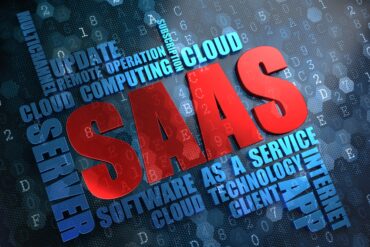
To succeed in the digital services economy – and the era of data-intensive applications – you need to leverage fresh data to deliver engaging real-time customer experiences.
Data has become an organization’s most important asset. But many enterprises today are challenged when it comes to staying current with the technological advancements that can keep them agile and competitive. This is particularly true in the case of data management.
Rather than adopting a single, general-purpose database that can handle hybrid data processing and data-intensive applications, companies often rely on large suites of data management tools. Data ingestion, data catalog, governance and security, and transformation are then all separate. Some companies try to stitch together multiple tools, but it isn’t easy.
When you stick with such traditional data platforms, it impedes your ability to address data-intensive applications. This slows your business progress, keeping you stuck in the past.
Here is how to get unstuck and move your data infrastructure – and your business – forward.
What is data intensity, and why does it matter to your customers and your business?
Applications involving a high level of complexity and a significant amount of data, and requiring concurrency, low latency, and rapid data ingestion, fall into the data-intensive category.
The application that enables customers to track UPS trucks in their neighborhoods is data intensive. So is Uber’s ride-sharing application. When you examine what goes into powering these data-intensive applications, you may be surprised at everything that can entail.
Let’s look under the hood of the Uber application. After you use the application to summon a ride, Uber analyzes what vehicles are near you and which ones are best positioned to get to you first. The application then employs geospatial data on traffic and weather to assess the length of your ride and how that compares to the typical length of that trip. Tapping into Uber’s pricing engine, the application then sets a price for your ride. Uber then uses the application to display the car, driver, estimated arrival time, present vehicle location, and pricing for you. The kicker is that Uber does all of the above within seconds to provide you with a great experience.
See also: A Good Data Analytics Program Relies on Good DataOps
Why are traditional data management platforms and data silos problematic?
You can leverage your data to deliver exceptional customer experiences, too. And, like most companies today, you probably already have a wealth of data available to do that. But if you have a dozen or more data platforms, siloed data is probably stopping or slowing such efforts.
When your data is spread across multiple clouds and systems, it can introduce latency, performance, and quality problems. And bringing together data from different silos and getting those data sets to speak the same language is a time- and budget-intensive endeavor.
Your existing data platforms also may prevent you from managing hybrid data processing, which, as Ventana Research explains, “enable[s] analysis of data in an operational data platform without impacting operational application performance or requiring data to be extracted to an external analytic data platform.” The firm adds that: “Hybrid data processing functionality is becoming increasingly attractive to aid the development of intelligent applications infused with personalization and artificial intelligence-driven recommendations.” Such applications are clearly important because they can be key business differentiators and enable you to disrupt a sector.
However, if you are grappling with siloed systems and data and legacy technology that is unable to ingest high volumes of complex data fast so that you can act in the moment, you may believe that it is impossible for your business to benefit from the data synergies that you and your customers might otherwise enjoy. You may forgo delivering some promising data-intensive applications and let your database limitations guide your architectural decisions.
But most of your applications probably are data intensive. If they are not, they should be. If you don’t deliver data-intensive applications, you can’t succeed in the digital services economy.
How can you address data intensity, deliver exceptional experiences and disrupt sectors?
To succeed in the digital services economy – and the era of data-intensive applications – you need to leverage fresh data to deliver engaging real-time customer experiences. You can only move fast and become agile if you can effortlessly scale your applications. And you want to bring analytics to your applications so that you can lower your costs and complexity, and both you and your customers can benefit from fast, interactive analytics.
You can achieve all of the above and more with data infrastructure that unifies transactions and analytics. Such infrastructure can allow you to address all forms of data, quickly load high volumes of that data, do application analytics with no noticeable lag – even when the system is very busy, and scale without having to grapple with costly processes and architecture.
We’ve long been an advocate and enabler of this modern database approach of bringing together transactional and analytics workloads in a single database. And now many other suppliers in the database arena, including Snowflake and MongoDB, are getting onboard.
Using a large collection of legacy data infrastructure platforms is clearly the way of the past. It’s time to get out of the weeds and grab ahold of the opportunities that are now available to you.
The era of data-intensive applications is upon us. Are you ready? Are your data management practices ready?





























